How To Dye Easter Eggs with Food Coloring or Natural Colors
This is the ultimate guide for dying Easter eggs. Learn how to dye Easter eggs with food coloring or natural colors.
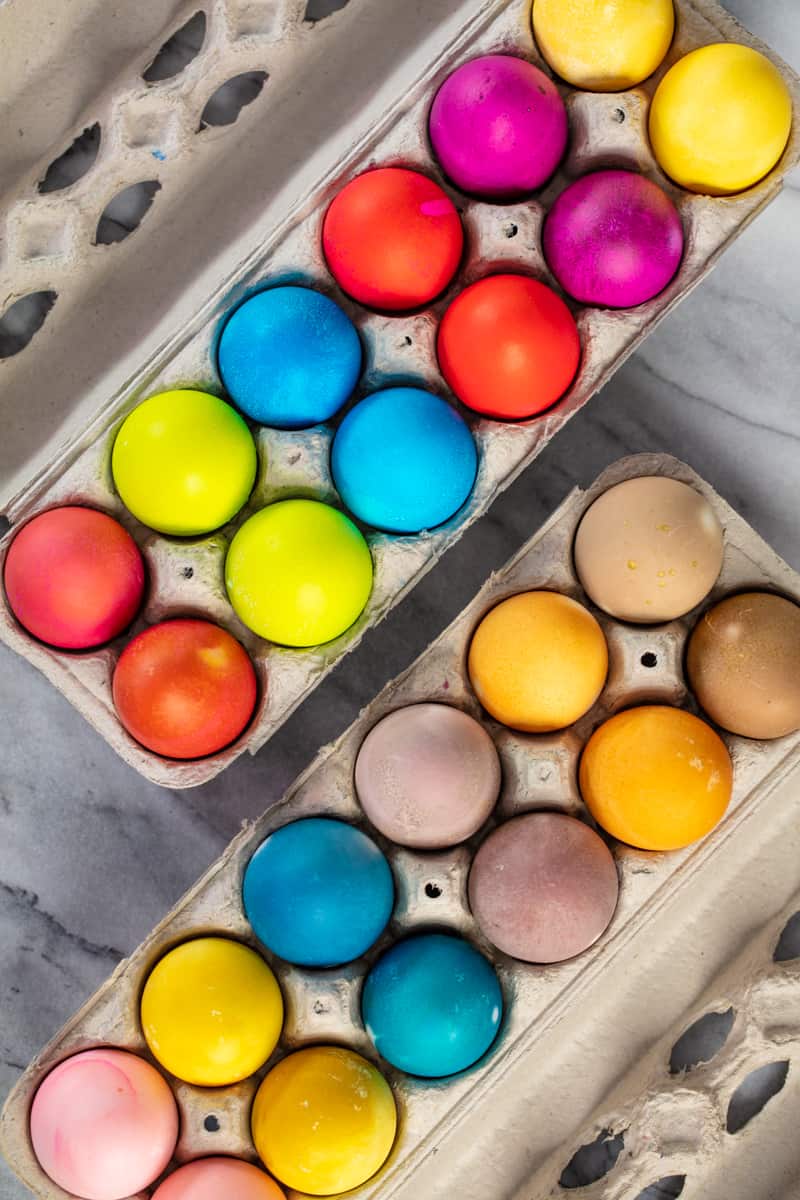
Is Easter egg dye edible?
Knowing if your Easter egg dye is edible can be very important especially if you are going to be eating your eggs. While natural dyes are edible, not all store bought Easter eggs dyes are. If you are using store bought dyes, make sure you closely read the labels to see if they are edible because every dye will be different. Making your own dye using food coloring is always a safe bet.
How can I naturally dye my eggs green?
Getting a beautiful green dyed egg is a must for many families and their kids! To get your egg naturally dyed green is a two-step process. First, you must dye it yellow in something like a turmeric and vinegar mix. Then once your egg is nice and yellow drop it into a natural blue dye from something like a purple cabbage and vinegar mixture. The green color you end up with will depend on how long you let the egg sit in both mixtures.
Can you dye brown eggs naturally?
Not only can you dye brown eggs naturally, but many people would argue that the colors you end with are even more beautiful than your typical dyed white egg. The only thing to consider is that if your eggs are coming from your own hens at home make sure you give them a wash before you start.
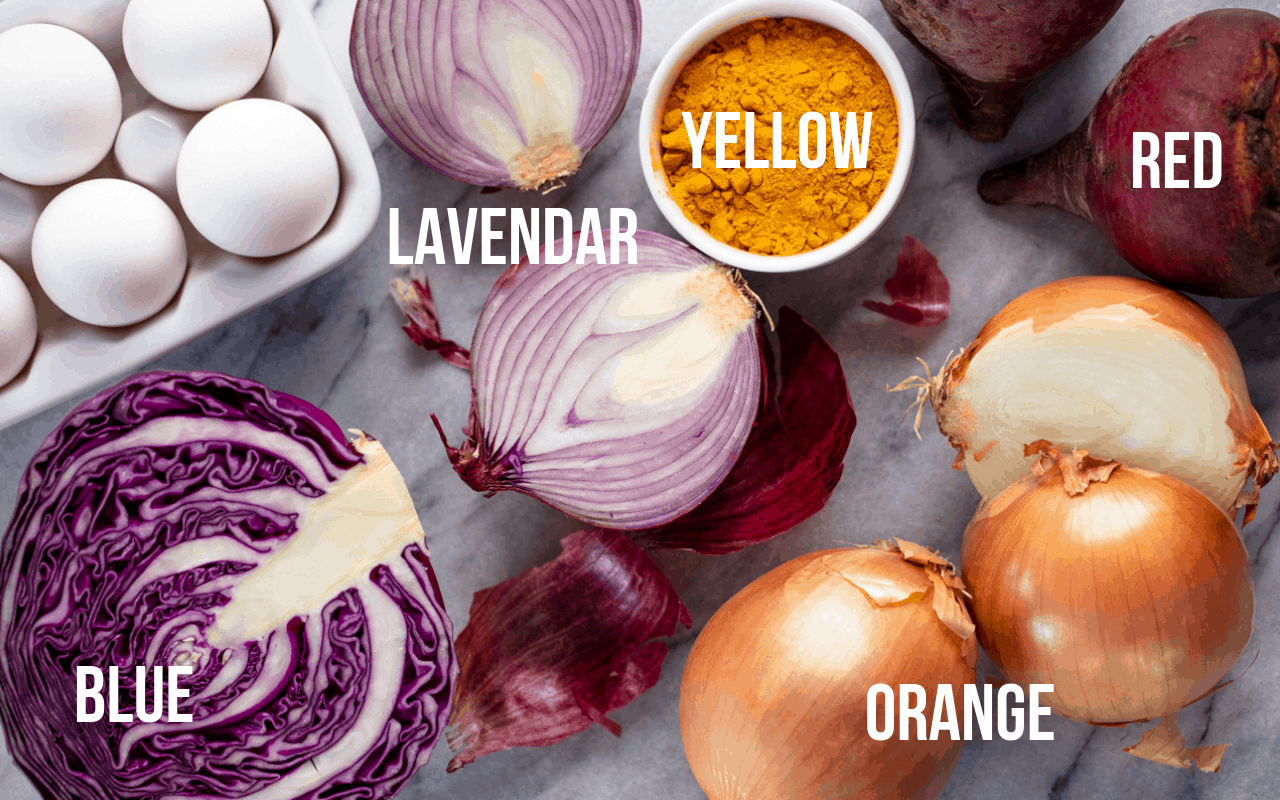
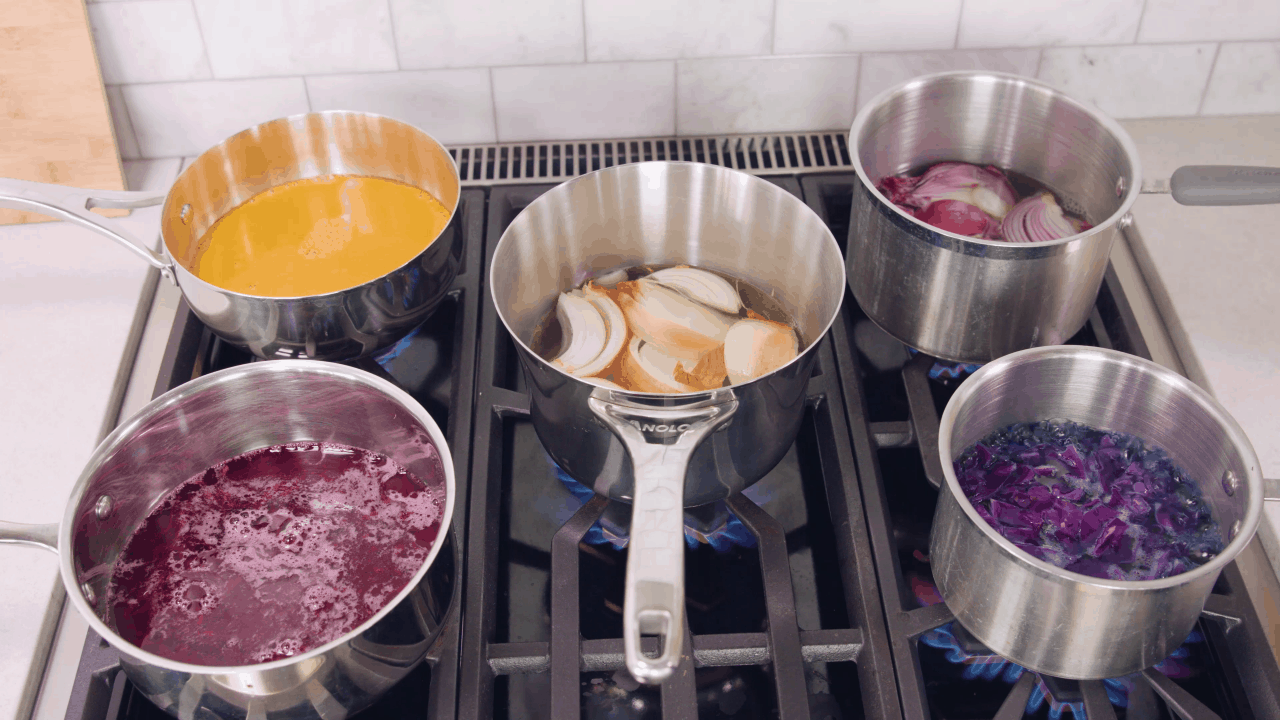
How to Dye Easter Eggs with Natural Colors
- Use this color guide and place the designated item into a saucepan.
- Pour 2-3 cups of water over and bring to a boil. Add in 1 tablespoons vinegar.
- Reduce heat and simmer 10-30 minutes, until desired color is achieved.
- Strain liquid dye into a container for dying eggs and discard solids.
- Soak boiled eggs in liquid 30 minutes – 24 hours, or until eggs reach desired color.
Natural Color Guide:
- BLUE: 1 cup chopped purple cabbage
- LAVENDER: 1 cup red onion skins
- PINK/RED: 1 cup shredded beets
- ORANGE: 1 cup yellow onion skins
- YELLOW: 2 tablespoons ground turmeric
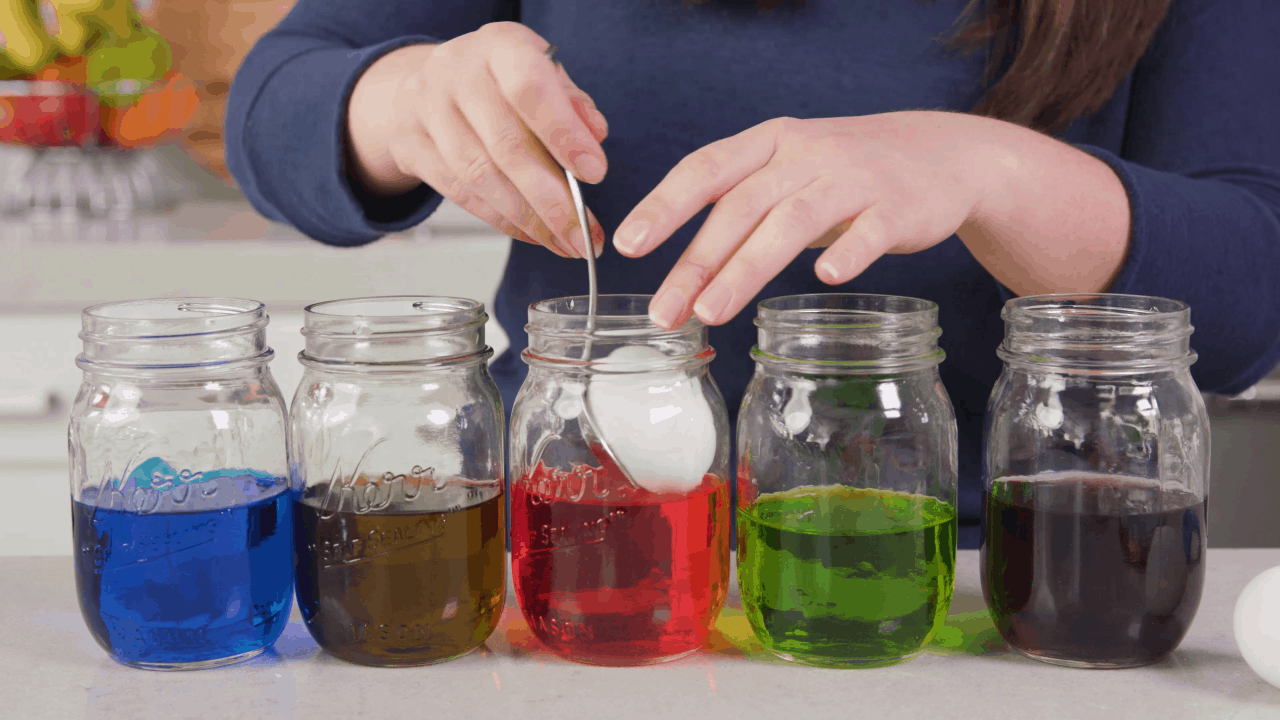
PRO TIP: How to Make Eggs Easier to Peel
Older eggs are easier to peel as a gas is released as the egg ages that helps separate the peel from the egg. We have tested a variety of methods for making your eggs peel easier, but the best, most consistent methods we’ve found are to either steam the eggs or cook them in an electric pressure cooker (Instant Pot). Check out our article on How to Boil Eggs for more information.
- For steaming, place your eggs in a steamer basket and place over a saucepan over cold water with the lid on. Bring the water to a boil over high heat. Reduce the heat to medium-low and let the eggs steam for 12 minutes. Transfer to an ice bath to cool completely and stop the cooking process.
- For an electric pressure cooker (Instant Pot), place the eggs on the rack insert. Pour 1 cup of cold water into the bottom. Place the lid on. Cook on high pressure for 4 minutes, followed by a 4 minute natural release, and then place into an ice bath to stop the cooking process.
Watch the video below where Rachel will walk you through every step of this recipe. Sometimes it helps to have a visual, and we’ve always got you covered with our cooking show. You can find the complete collection of recipes on YouTube, Facebook Watch, or our Facebook Page, or right here on our website with their corresponding recipes.

Dying Easter Eggs
Pin
Rate
Ingredients
- 12 large eggs
- 5-15 drops liquid food coloring various colors
- 1 tablespoon vinegar per color
Instructions
- Place eggs in the bottom of a saucepan. Be sure not to crowd the eggs in the pan. They should fit comfortably. Fill the pan with cold water, 1 inch above the eggs.
- Bring the water to a rapid boil on the stovetop over high heat. Once the water comes to a boil, cover the pan with a lid and remove the pan from the heat. Do not lift the lid. Set a timer 12 minutes.
- Fill a large bowl with ice and water. When the eggs reach the desired cooking time, use tongs to remove the eggs from the hot water and immerse gently into the prepared ice water to cool, about 10 minutes.
- Set out several bowls or plastic cups, one for each color you'd like to make. Place 5 drops of liquid food coloring into the bottom of each. Pour in 1 cup of water into each container. Add in 1 tablespoon of vinegar to each and stir. Add up to 10 more drops food coloring to achieve desired color. Repeat this process for each color.
- Once eggs are cooled, dip eggs in dye for about 3-5 minutes, until desired color is achieved. Use a slotted spoon to remove the eggs from the container and allow to dry. Store in the refrigerator.
Notes
You can easily create your own natural dyes for Easter Eggs.
- Use this color guide and place the designated item into a saucepan.
- Pour 2-3 cups of water over and bring to a boil. Add in 1 tablespoons vinegar.
- Reduce heat and simmer 10-30 minutes, until desired color is achieved.
- Strain liquid dye into a container for dying eggs and discard solids.
- Soak boiled eggs in liquid 30 minutes - 24 hours, or until eggs reach desired color.
BLUE: 1 cup chopped purple cabbage
LAVENDER: 1 cup red onion skins
PINK/RED: 1 cup shredded beets
ORANGE: 1 cup yellow onion skins
YELLOW: 2 tablespoons ground turmeric.
Nutrition
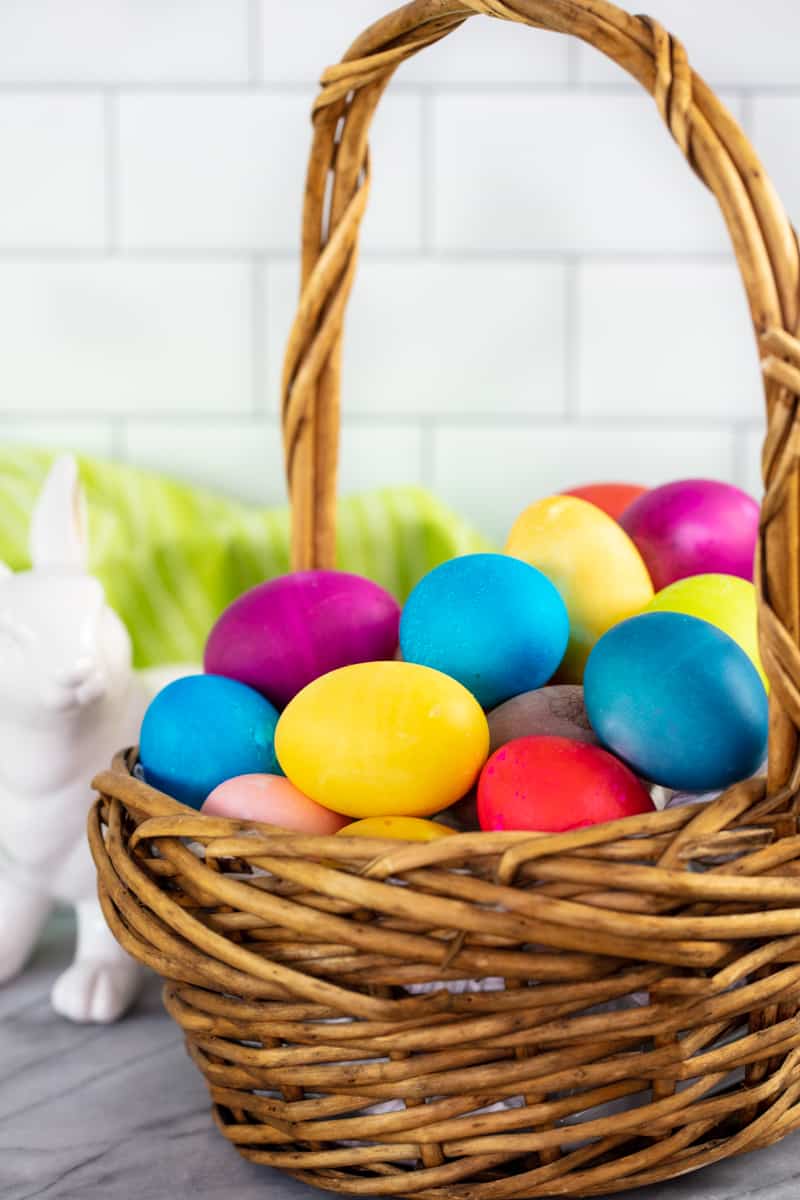
0 Response to "How To Dye Easter Eggs with Food Coloring or Natural Colors"
Post a Comment